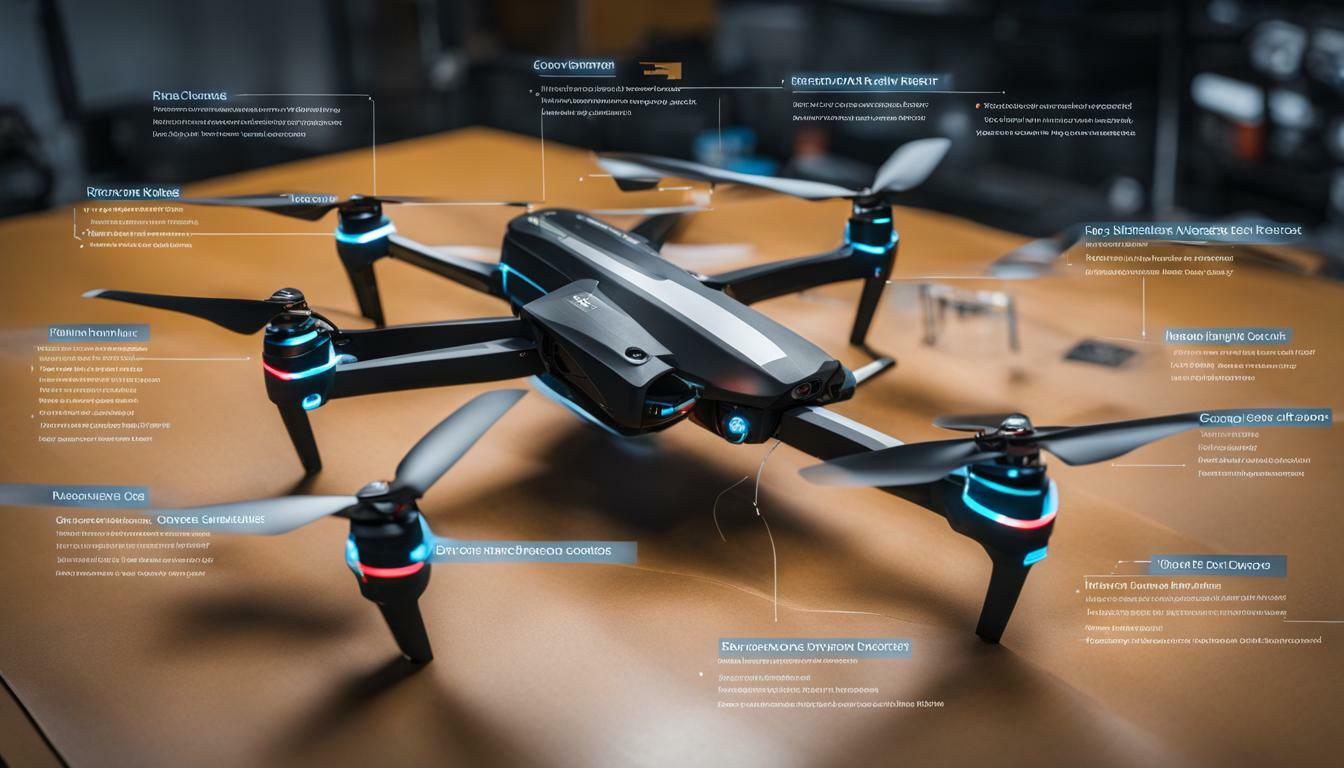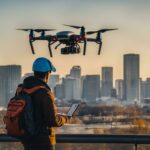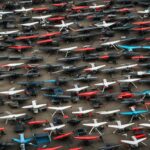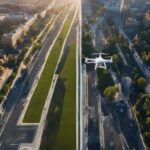Drones have become increasingly popular in recent years, and understanding their key features and advancements is crucial for anyone interested in this rapidly evolving technology. Whether you’re a professional photographer, hobbyist, or industry enthusiast, knowing what sets a top-performing drone apart from the rest can greatly impact your experience and results.
In this comprehensive guide, I will provide an in-depth analysis of the top characteristics that define the best drones available in the market today. From performance and specifications to design and applications, this guide will explore everything you need to know before making a purchase decision.
Key Takeaways: Your guide to In-depth analysis of top drone characteristics
- Consider the total cost of ownership, including the price of the drone and additional accessories such as batteries and spare propellers.
- Be mindful of privacy concerns and public perception surrounding drone usage.
- Familiarize yourself with the regulations and restrictions on where you can legally fly drones.
- When choosing a drone, prioritize factors such as camera quality, ease of use, collision detection, and stability.
- Choose software that suits your needs for flight planning, data management, and image processing.
By following this guide and understanding the key characteristics of drones, you’ll be well-equipped to make an informed decision and select a drone that matches your specific needs and expectations.
Exploring Drone Types and Applications
Drones come in various types and serve a wide array of applications, making them versatile tools for many industries and recreational activities. Whether you are a professional photographer looking to capture breathtaking aerial shots or a farmer interested in precision agriculture, there is a drone specifically designed to meet your needs.
Table: Drone Types and Applications
| Drone Type | Applications |
|---|---|
| Photography/Videography Drones | Aerial photography, cinematography, videography |
| Mapping/Surveying Drones | Topographic mapping, land surveying, construction site surveying |
| Delivery Drones | Package delivery, medical supply transportation |
| Racing Drones | Drone racing competitions, FPV (First Person View) racing |
| Agricultural Drones | Crop monitoring, pesticide spraying, soil analysis |
| Security Drones | Surveillance, perimeter patrolling, event monitoring |
Quote: “Drones have revolutionized the way we capture images and videos. Their ability to fly high above the ground and reach areas that are inaccessible to traditional cameras has opened up new possibilities for photographers and filmmakers.” – Aerial Photographer
Exploring Drone Applications
- Aerial Photography and Videography: Drones equipped with high-quality cameras and stabilizers capture stunning aerial shots and cinematic footage for various purposes such as weddings, real estate listings, and travel documentaries.
- Military and Security: Drones play a crucial role in military operations, providing surveillance, reconnaissance, and intelligence-gathering capabilities. They also enhance security by monitoring critical infrastructure and public spaces.
- Mapping and Surveying: Specialized drones equipped with advanced sensors and mapping software are used to create accurate topographic maps, conduct land surveys, and monitor construction sites.
- Agriculture and Farming: Agricultural drones help farmers optimize crop production by providing real-time data on soil health, pest infestations, and irrigation needs. They also facilitate precision spraying of fertilizers and pesticides, reducing costs and environmental impact.

Analyzing Essential Drone Characteristics
To make an informed decision about which drone to purchase, it’s crucial to analyze the essential characteristics that contribute to a drone’s performance and usability. When comparing different drone models, conducting drone reviews and drone comparisons can provide valuable insights into their strengths and weaknesses. By examining key factors such as camera quality, ease of use, collision detection, and stability, you can determine which drone best suits your needs.
Camera quality plays a significant role in the overall experience of capturing aerial photos and videos. Higher-resolution cameras with advanced image stabilization technology will produce clearer and more professional-looking footage. Understanding the camera specifications, such as sensor size, aperture, and focal length, can help you assess the image quality and capabilities of a drone.
Another important characteristic to consider is ease of use. Beginners may prefer drones with intuitive controls and automated features, such as GPS positioning and automatic takeoff/landing. Moreover, collision detection systems, such as obstacle avoidance sensors, can help prevent accidents and improve safety during flight. Evaluating these features will ensure a smoother flying experience, especially for novice users.
Stability is also paramount when it comes to drone performance. Drones with advanced flight controllers and intelligent flight modes can maintain a steady position and follow precise flight paths. This stability is essential for capturing smooth footage and executing complex maneuvers. Examining a drone’s stability rating and flight capabilities will help you determine its suitability for your intended use, whether it be aerial photography, videography, or other applications.
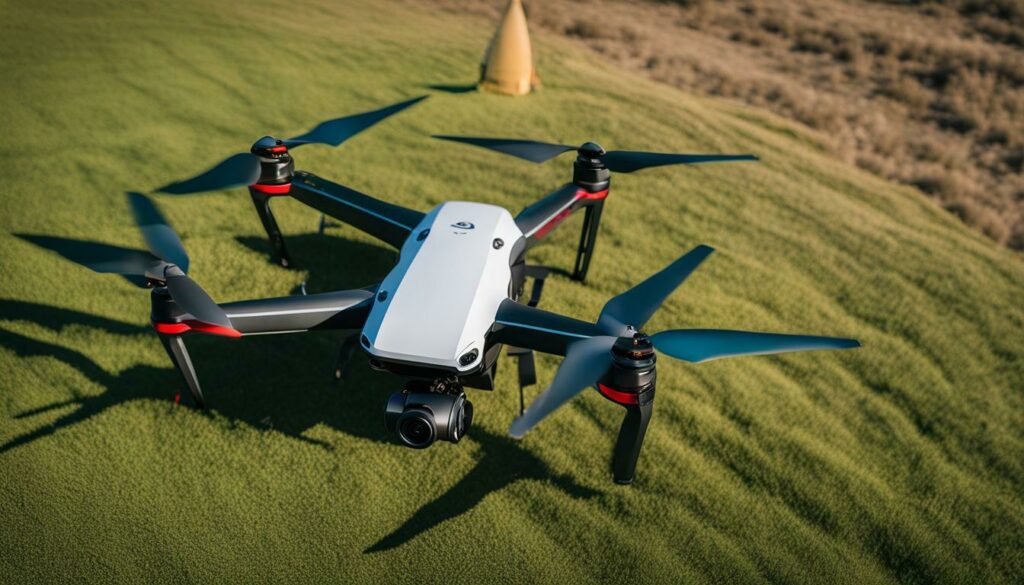
As the drone industry continues to evolve, staying up-to-date with the latest trends and developments is crucial. The drone industry is witnessing advancements in areas such as artificial intelligence, extended flight range, and improved battery life. Understanding these trends can help you choose a drone that incorporates the latest technology and offers the most cutting-edge features.
Examining Drone Specifications and Performance
In order to assess a drone’s capabilities and suitability for your requirements, it is essential to examine its specifications and performance features. By understanding the technical aspects of a drone, you can make an informed decision and choose a drone that aligns with your needs.
When evaluating drone specifications, one key factor to consider is the camera quality. The camera plays a crucial role in capturing high-quality aerial footage or images. Look for drones with high-resolution cameras and advanced features such as image stabilization and adjustable settings.
Flight time is another important specification to consider. This refers to the duration a drone can stay airborne on a single battery charge. Longer flight times are desirable, especially for professional use cases where extended flight sessions are required. Additionally, consider the recharge time for the battery, as this will impact the overall workflow.
| Specifications | Drone A | Drone B | Drone C |
|---|---|---|---|
| Camera Quality | 4K Ultra HD | 1080p Full HD | 2.7K |
| Flight Time | 25 minutes | 20 minutes | 30 minutes |
| Max Speed | 40 mph | 35 mph | 45 mph |
| Range | 1 mile | 0.5 miles | 1.5 miles |
Other important specifications to consider are the maximum speed and range of the drone. These specifications determine how far and how fast the drone can travel, which is crucial for specific use cases such as inspection or surveying large areas.
It’s also worth evaluating the control options and features that a drone offers. Some drones come with advanced flight modes like follow-me or waypoint navigation, which can enhance the overall user experience and enable more creative shots. Additionally, consider the drone’s stability and collision detection capabilities to ensure safe and stable flights.
By thoroughly analyzing drone specifications, you can compare different models and select the one that best matches your requirements. Keep in mind that while advanced drones may offer impressive specifications, they may also come at a higher price point. Therefore, it is important to strike a balance between the specifications, performance, and your budget.
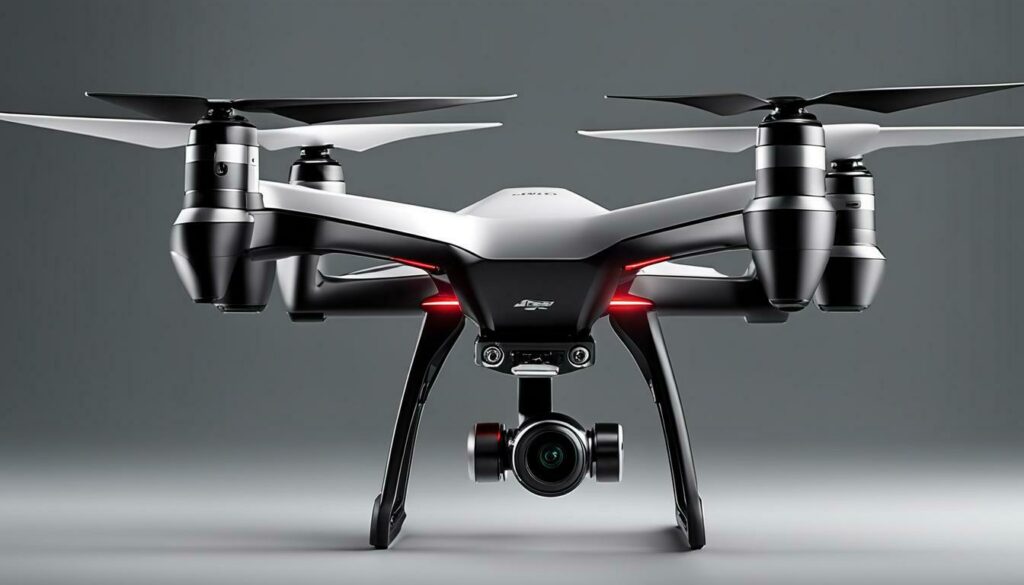
The components and design of a drone play a crucial role in its overall performance and functionality. Each part has a specific function that contributes to the drone’s ability to fly, capture images, and perform various tasks. By understanding the different components and how they work together, you can make an informed decision when choosing a drone that meets your specific needs.
Let’s start by examining the key components of a drone:
- Camera: The camera is an essential component for drones used in aerial photography and videography. It captures high-quality images and videos, allowing you to capture stunning aerial footage.
- Gimbal: The gimbal is a mechanical stabilization system that holds the camera steady during flight, minimizing vibrations and ensuring smooth footage.
- GPS: The GPS module enables the drone to accurately determine its position and navigate autonomously. It is crucial for precise flight control and stability.
- Battery: The battery powers the drone and determines its flight time. Higher-capacity batteries offer longer flight durations, allowing for more extended aerial missions.
- Flight Controller: The flight controller is the brain of the drone, processing data from sensors and controlling its flight. It ensures stability, controls the motors, and handles navigation commands.
- Motor and Propeller: The motors and propellers generate the thrust required for the drone to fly. They come in different sizes and configurations, depending on the drone’s intended use and payload capacity.
When considering the design of a drone, factors such as aerodynamics, weight distribution, and durability are essential. A well-designed drone will have streamlined shapes and lightweight materials that optimize flight performance and enhance maneuverability. Additionally, robust construction and protective features are crucial to withstand harsh flying conditions and potential crashes.
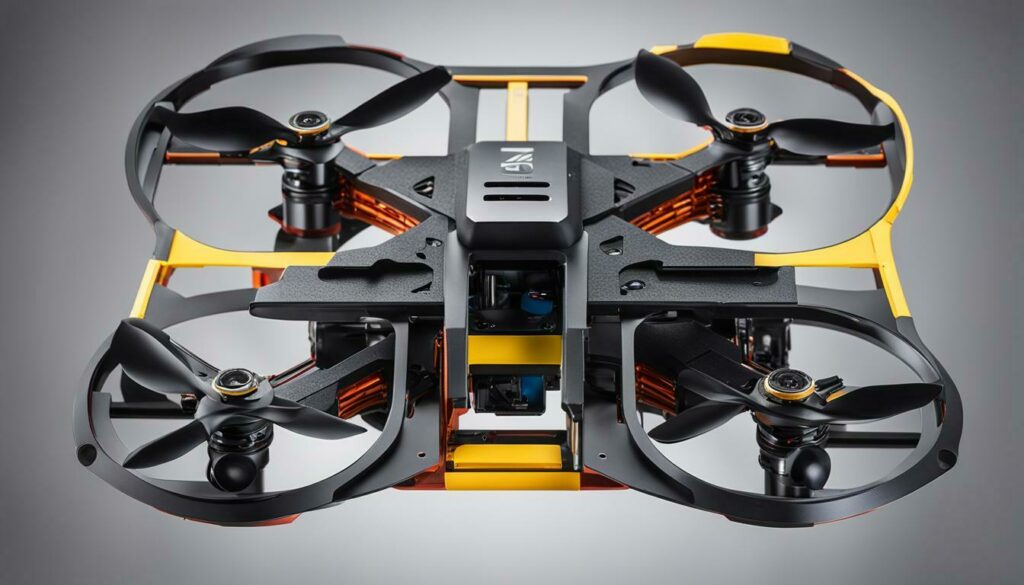
In conclusion, understanding the components and design of a drone is key to evaluating its performance and suitability for your needs. By considering factors such as camera quality, gimbal stability, GPS capabilities, battery life, flight controller efficiency, motor power, and design durability, you can choose a drone that meets your requirements and ensures a smooth and successful flying experience.
Evaluating Drone Regulations and Legal Considerations
Operating a drone comes with legal responsibilities and regulations that must be adhered to in order to ensure safety and privacy. Whether you are a recreational drone enthusiast or a professional drone pilot, understanding and complying with these regulations is essential.
Drone Registration: In the United States, drones weighing between 0.55 pound and 55 pounds need to be registered with the Federal Aviation Administration (FAA). This registration process helps the authorities keep track of drone ownership and ensures accountability in case of any incidents or violations.
Airspace Restrictions: It’s important to be aware of airspace restrictions and where you can legally fly your drone. Prohibited areas may include airports, military installations, national parks, and certain urban areas. Familiarize yourself with the regulations in your country or region to avoid any accidental violations.
Privacy Concerns: Drones equipped with cameras can raise privacy concerns, as they have the potential to invade personal space and capture sensitive information. It’s crucial to respect the privacy of others and avoid flying drones in areas where individuals have a reasonable expectation of privacy, such as backyards or private property. Always prioritize the privacy rights of individuals while operating a drone.
Safe and Responsible Operation: To ensure the safety of others and the longevity of drone usage, it’s important to adhere to safe operational practices. This includes flying within visual line of sight, avoiding crowded areas, maintaining a safe distance from people and buildings, and following the manufacturer’s guidelines for proper drone operation. Always prioritize the safety of yourself and those around you.

Assessing Drone Software and Data Management
The software used in conjunction with a drone influences how you manage and harness the data collected during operations. With advancements in drone technology, there are various software options available for flight planning, data management, and image processing. Choosing the right software is essential for maximizing the capabilities of your drone and extracting valuable insights from the data it collects.
One key aspect to consider is flight planning software, which allows you to create and execute flight plans with ease. These software solutions provide features such as waypoint navigation, automated takeoff and landing, and real-time monitoring of the drone’s position. By utilizing flight planning software, you can ensure precise and efficient data collection, whether you are conducting aerial surveys, mapping missions, or inspections.
Another crucial component is data management software, which allows you to organize, store, and analyze the data captured by your drone. These software solutions provide tools for data visualization, annotation, and export, enabling you to generate detailed reports and share insights with stakeholders. By effectively managing and analyzing the data, you can derive actionable information and make informed decisions based on the collected data.
Furthermore, image processing software plays a vital role in enhancing the quality of aerial imagery captured by the drone’s camera. These software solutions offer advanced features such as image stitching for creating high-resolution panoramas, image enhancement for optimizing the visual quality, and 3D modeling for creating accurate representations of the surveyed areas. By utilizing image processing software, you can unlock the full potential of your drone’s camera and produce stunning visual outputs.
Table: Top Drone Software Solutions
| Software | Features |
|---|---|
| DroneDeploy | Flight planning, data management, 2D/3D mapping |
| Pix4D | Photogrammetry, image processing, data analysis |
| DJI Terra | Automated flight planning, real-time mapping, data analysis |
| Propeller Aero | Site surveying, progress tracking, data visualization |
By leveraging the right drone software, you can streamline your operations, maximize the value of the data collected, and ultimately achieve better results with your drone. It’s crucial to research and select the software that aligns with your specific needs and integrates seamlessly with your drone’s capabilities. With the advancements in drone software and data management, the possibilities for leveraging drones in various industries continue to expand.
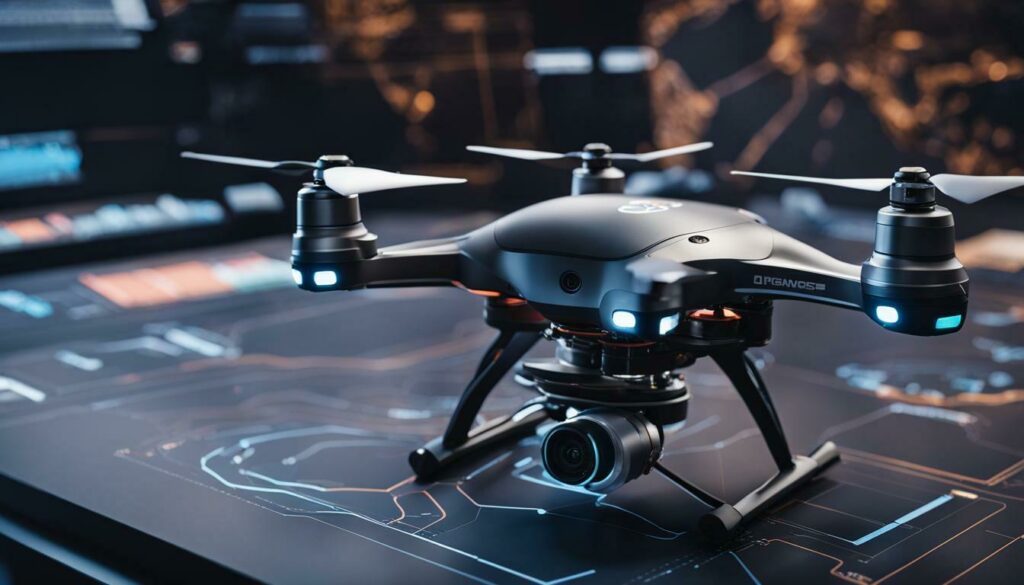
When considering the purchase of a drone, it is important to take into account the upfront cost as well as any additional expenses for accessories and maintenance. The price of the drone itself can vary greatly depending on its features, capabilities, and brand. Drones range in price from budget-friendly options for beginners to high-end models for professional use. It’s crucial to set a budget and determine what features are most important to you before making a decision.
In addition to the initial cost of the drone, it’s essential to consider the expenses of accessories and maintenance. Extra batteries are a must-have for longer flight times, as the average drone battery typically lasts around 15-30 minutes. Spare propellers are also recommended as they can easily get damaged during flights or crashes. These additional costs should be factored into your budget to ensure you have all the necessary items to enhance your drone flying experience.
| Drone Accessories | Price Range |
|---|---|
| Extra batteries | $50 – $200 |
| Spare propellers | $5 – $50 |
| Carrying case | $30 – $100 |
| Filters (ND, polarizing) | $20 – $80 |
| MicroSD card | $10 – $50 |
It’s worth noting that certain accessories, such as filters for the camera, a carrying case for transportation, and a high-quality microSD card for storage, can enhance the functionality and overall experience of using a drone. However, these accessories are optional and depend on your specific needs and preferences. Evaluating the cost of these additional items will help you make an informed decision on which accessories are worth investing in.
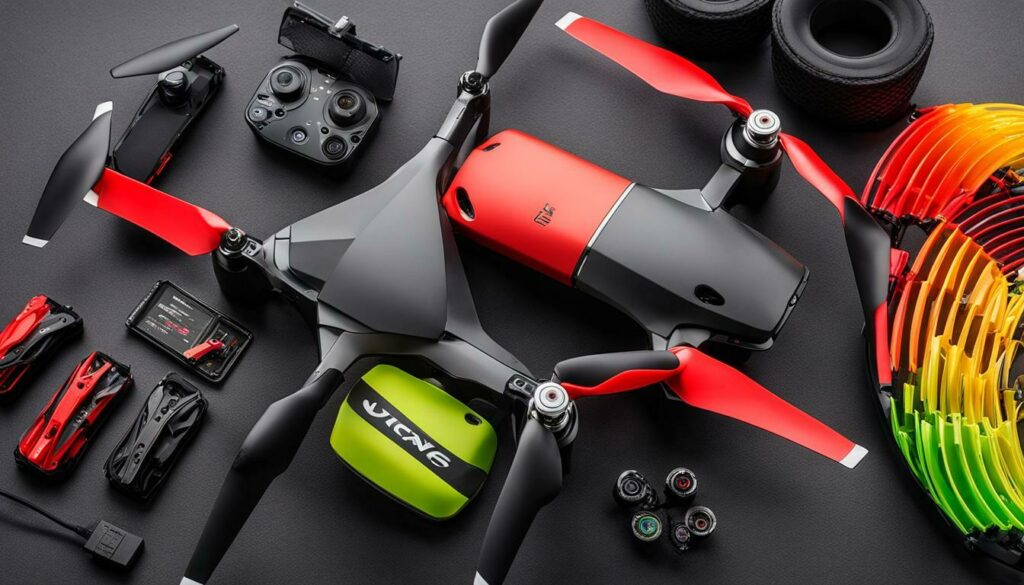
By considering the upfront cost, along with the expenses for accessories and maintenance, you can create a realistic budget for purchasing and owning a drone. It’s important to strike a balance between the features you desire and the overall cost of the drone and its accessories. Conduct thorough research, compare prices, and read reviews to ensure you are getting the best value for your investment.
Addressing Privacy Concerns and Perception of Drones
Drones have raised concerns about privacy invasion, and it is important to address these concerns and operate drones responsibly. As drone technology continues to advance, there is a growing concern regarding the potential invasion of privacy that drones can pose. People are worried about their personal security and the possibility of unauthorized surveillance. It is crucial for drone operators to navigate this delicate issue with utmost care and respect for privacy rights.

In order to address these concerns, drone operators should be aware of the legal restrictions and regulations in place. In the United States, drones weighing between 0.55 pound and 55 pounds need to be registered with the Federal Aviation Administration (FAA). This registration ensures that drones are operated safely and responsibly, and it helps authorities keep track of the growing number of drones in the airspace.
Furthermore, it is essential for drone operators to respect the privacy of others. This means avoiding flying drones in areas where privacy can be compromised, such as residential neighborhoods or private properties. Additionally, sensitive areas such as government buildings, military installations, and airports should be strictly off-limits for drone flights. By adhering to these guidelines, drone operators can mitigate privacy concerns and help build a positive perception of drones in the public eye.
Operating a drone responsibly also means being mindful of the potential impact on wildlife and the environment. Drones should not be used to disturb or harass wildlife, and operators should always follow local regulations and guidelines regarding drone flights in protected areas. By respecting the natural environment, drone operators can ensure that their activities do not have a negative impact on wildlife habitats or ecosystems.
Summary
Drones have raised concerns about privacy invasion, and it is important to address these concerns and operate drones responsibly. This includes understanding and complying with legal regulations, respecting the privacy of others, and being mindful of the impact on wildlife and the environment. By taking these precautions, drone operators can promote a positive perception of drones and contribute to the safe and responsible use of this exciting technology.
Choosing the Right Drone for Your Needs
Choosing the right drone requires careful consideration of your needs, use cases, and the available options in the market. When evaluating drones, it’s important to analyze various factors that will impact your decision-making process. Here are some key aspects to consider:
- Camera Quality: If aerial photography or videography is your primary use case, you’ll want a drone with a high-quality camera that can capture clear and sharp images.
- Ease of Use: Consider the user-friendliness of the drone’s controls and interface. Look for features like GPS navigation and obstacle avoidance, which can make flying easier and safer.
- Collision Detection: Drones equipped with collision detection sensors can help prevent accidents and protect your investment. This feature is particularly important for beginners or those flying in crowded areas.
- Stability: Look for drones with advanced stabilization systems, such as gimbals or electronic image stabilization, to ensure smooth and steady footage.
It’s crucial to determine your specific needs and desired use cases before making a decision. Are you looking to capture breathtaking aerial shots for professional purposes, or do you simply want a drone for recreational flying? Consider factors such as flight time, range, and payload capacity to ensure the drone can meet your requirements.
Regulations and restrictions are also important to take into account. In the United States, drones weighing between 0.55 pound and 55 pounds need to be registered with the Federal Aviation Administration (FAA). Familiarize yourself with local regulations regarding where and when you can legally fly drones to avoid any legal complications.
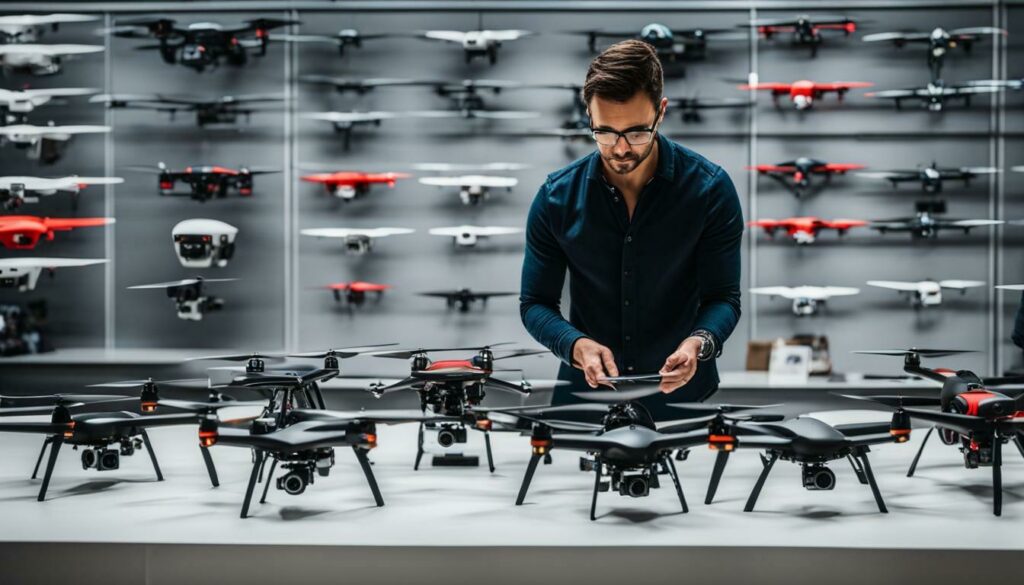 When it comes to data management, choosing the right software is essential. Look for software options that offer flight planning capabilities, data management, and image processing tools. This will allow you to effectively utilize the data collected by the drone and extract valuable insights.
When it comes to data management, choosing the right software is essential. Look for software options that offer flight planning capabilities, data management, and image processing tools. This will allow you to effectively utilize the data collected by the drone and extract valuable insights.
To make an informed decision, read reviews, compare different models, and consider seeking advice from experienced drone users. By carefully evaluating the characteristics and capabilities of various drones, you’ll be able to select the one that best suits your needs and ensures an optimal flying experience.
Exploring Advancements in Drone Technology
Drone technology is continuously evolving, and staying updated with the latest advancements is essential for enthusiasts and professionals alike. The rapid pace of innovation has led to significant improvements in various aspects of drone performance and functionality.
One area where advancements have been particularly notable is obstacle avoidance. Modern drones are equipped with advanced sensors and intelligent algorithms that allow them to detect and avoid obstacles in their flight path. This feature not only enhances flight safety but also enables drones to navigate complex environments and capture stunning aerial footage with greater ease.
Another significant advancement in drone technology is the emergence of autonomous flight capabilities. Drones can now be programmed to fly predetermined routes, follow subjects, or perform specific tasks without the need for constant manual control. This level of autonomy has opened up new possibilities for applications such as aerial surveying, inspection, and even delivery services.
| Advancement | Description |
|---|---|
| Obstacle Avoidance | Intelligent sensors and algorithms enable drones to detect and avoid obstacles in their flight path. |
| Autonomous Flight | Drones can be programmed to fly predetermined routes or perform specific tasks without constant manual control. |
| Extended Flight Range | Improved battery technology and aerodynamic designs allow drones to achieve longer flight times and cover greater distances. |
| Improved Camera Systems | Advanced camera sensors, gimbals, and stabilization technologies result in higher-quality aerial photography and videography. |
Extended flight range is another area where significant progress has been made. Improved battery technology and aerodynamic designs enable drones to achieve longer flight times and cover greater distances. This is particularly beneficial for tasks that require extensive coverage, such as aerial mapping, search and rescue operations, or wildlife monitoring.
Lastly, camera systems have also undergone significant advancements. Advanced camera sensors, gimbals, and stabilization technologies have resulted in higher-quality aerial photography and videography. Drones can now capture stunning images and videos with incredible clarity, stability, and precision, making them invaluable tools for professional photographers, cinematographers, and content creators.
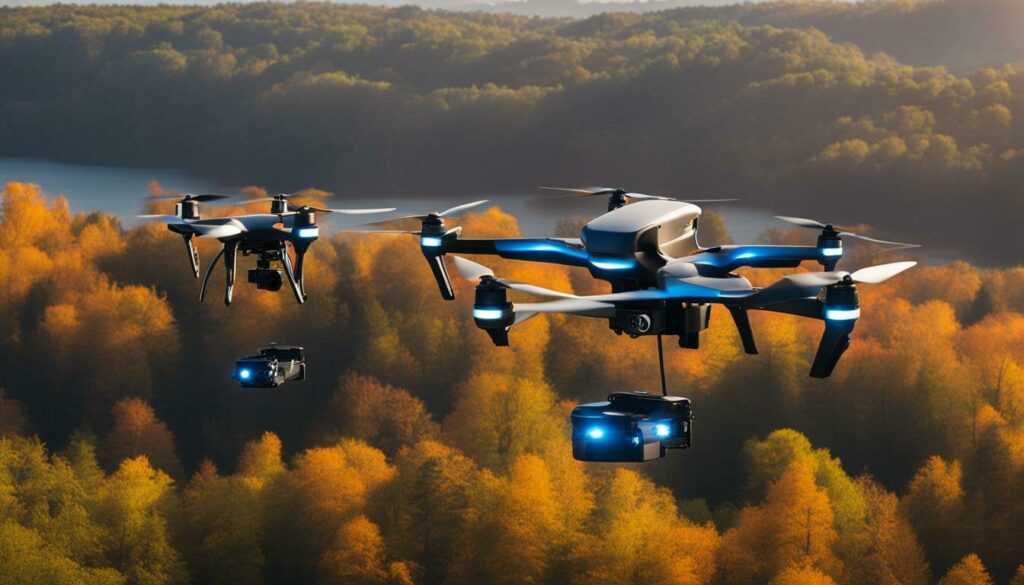
The thorough analysis of top drone characteristics covered in this guide equips you with the knowledge necessary to make an informed decision when choosing the right drone for your needs. When analyzing the characteristics of top drones, there are several factors to consider. These include the price of the drone itself, as well as the cost of extra batteries, spare propellers, and other accessories. It’s also important to be aware of privacy concerns and how drones can be perceived as invasive.
Additionally, understanding the regulations and restrictions on where you can legally fly drones is crucial. In the US, for example, drones weighing between 0.55 pound and 55 pounds need to be registered with the Federal Aviation Administration. Choosing the right drone for your needs requires considering factors such as camera quality, ease of use, collision detection, and stability. It’s important to determine your specific needs and desired use cases before selecting a drone.
Finally, choosing the right software is also essential, as it will impact how you manage and utilize the data collected by the drone. By carefully considering all these aspects, you can confidently select a drone that aligns with your requirements and ensures a fulfilling drone ownership experience.
Remember, this guide serves as a comprehensive resource that provides an in-depth analysis of top drone characteristics. Use it as your go-to reference when evaluating and selecting a drone, and join the growing community of drone enthusiasts who are utilizing this exciting technology to capture stunning aerial imagery, conduct inspections, deliver packages, and explore new possibilities.
FAQ
What factors should I consider when choosing a drone?
When choosing a drone, it’s essential to consider factors such as camera quality, ease of use, collision detection, stability, and your specific needs and desired use cases.
What are the regulations for flying drones in the US?
In the US, drones weighing between 0.55 pounds and 55 pounds need to be registered with the Federal Aviation Administration. It’s important to be aware of where you can legally fly your drone and any airspace restrictions.
What accessories do I need to consider when buying a drone?
In addition to the drone itself, you may need to consider the cost of extra batteries, spare propellers, and other accessories. These additional costs should be factored into your overall budget.
How do I address privacy concerns when using a drone?
Drones can be perceived as invasive, so it’s important to operate them responsibly and be aware of privacy concerns. Avoid flying them over private property without permission and respect others’ right to privacy.
What software do I need for my drone?
Choosing the right software is essential for managing and utilizing the data collected by your drone. Consider software options for flight planning, data management, and image processing.
How do I choose the right drone for my needs?
Choosing the right drone starts with determining your specific needs and desired use cases. Consider factors such as camera quality, ease of use, collision detection, stability, and match them with the available drone options.
What are the cost considerations when buying a drone?
In addition to the price of the drone itself, it’s important to consider the cost of extra batteries, spare propellers, and other accessories. Understanding the total cost of ownership will help you budget effectively.
How do I stay informed about advancements in drone technology?
To stay informed about advancements in drone technology, keep up with industry news and explore sources that cover innovations such as obstacle avoidance, autonomous flight capabilities, extended flight range, and improved camera systems.


